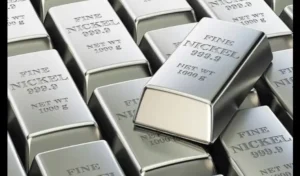GENERAL CHARACTERISTICS
Silver’s distinctive characteristics render it a valuable industrial commodity, despite its classification as a precious metal. Demand for silver hinges on three primary pillars: industrial applications, photography, and jewelry & silverware, accounting for 342, 205, and 259 million ounces respectively in 2002. The majority of mined silver originates from Mexico, Peru, the United States, and Australia. Approximately 27 percent of global silver production comes from primary mines, while the remaining 73 percent is obtained as a by-product of gold, copper, lead, and zinc mining.
The price of silver is influenced not only by its primary output but also by the prices of other metals, as world mine production is interconnected with their prices. The correlation between silver and economic activity is robust, with around two-thirds of total silver fabrication occurring in the industrial and photographic sectors. Imbalances between demand and supply often lead to reductions in stocks held by governments and investors.
WORLD SILVER SUPPLY FROM ABOVE-GROUND STOCKS
| in Million Ounces | 2001 | 2002 |
|---|---|---|
| Implied Net Disinvestment | -9.5 | 20.9 |
| Producer Hedging | 18.9 | -24.8 |
| Net Government Sales | 87.2 | 71.3 |
| Sub-total Bullion | 96.6 | 67.4 |
| Scrap | 182.7 | 184.9 |
| Total | 279.3 | 252.3 |
In the Indian context, silver imports for domestic consumption in 2002 totaled 3,400 tons, a 25% decrease from the record high of 4,540 tons in 2001. Open General License (OGL) imports serve as the primary source of supply to the Indian market. Non-duty paid silver for the export sector witnessed a significant increase in 2002, rising nearly 200% year-on-year to 150 tons. Approximately 50% of India’s silver requirements were fulfilled through imports, with significant sources including China, the UK, CIS countries, Australia, and Dubai.
In 2002, Indian industrial demand for silver was estimated at 1375 tons, down by 13% from 1,579 tons in 2001. Despite this decline, India remains one of the largest consumers of silver globally, alongside industrial giants like Japan and the United States. Unlike the US and Japan, where industrial demand primarily focuses on hardcore applications such as electronics and brazing alloys, only 15% of Indian industrial offtake is for such purposes, with the rest utilized for foils in decorative applications, jewelry plating, and jari.
Silver price volatility in India is a significant determinant of silver demand, similar to gold. The London Bullion Market serves as the global hub of Over-The-Counter (OTC) silver trading, while Comex futures in New York attract most fund activity.
The most significant price movement in silver since 1995 occurred between February 4th and 6th, 1998, when daily prices surged by 22.3%, attributed to a notable US financier accumulating nearly 130 ounces of physical silver. Post-September 1999, daily silver prices have not exhibited movements exceeding 5%, and weekly silver prices have done so only once.
INDIA INDUSTRIAL FABRICATION, 2002
| in Percentage | |
| Pharmacy & Chemicals | 22.4 |
| Foil | 9 |
| Plating | 13.7 |
| Solders & Brazing | 5.4 |
| Electrical | 13.5 |
| Photography | 0.85 |
| Jari | 17.1 |





















+ There are no comments
Add yours